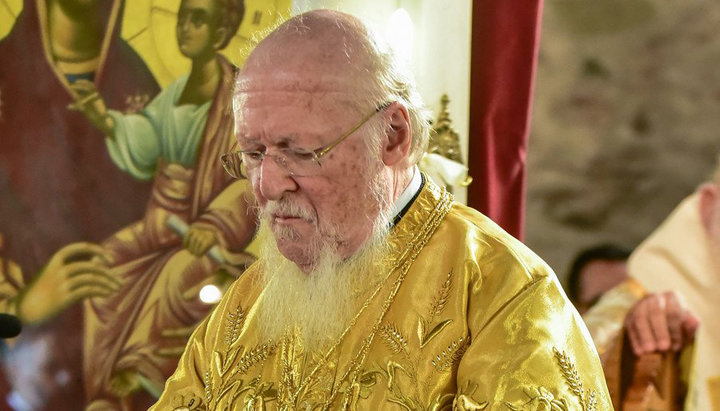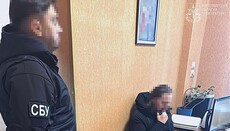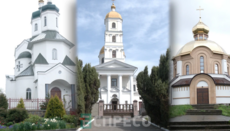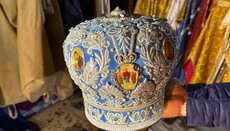Phanar’s head: St. Andrew’s Skete on Athos – a field of ethnic conflict

Patriarch Bartholomew said that in St. Andrew’s Skete built by Russian monks, a "heresy of ethnophyletism" was planted, and attempts were made to nationalize Athos.
On October 21, 2019, during a visit to St. Andrew’s Skete on Mount Athos, Patriarch Bartholomew of Constantinople said that the history of the monastery shows an example of the Phanar’s struggle to preserve Athos from the heresy of ethnophyletism, reports “Orthodoxia.info”.
“Our Holy Great Church of Christ, under the canonical protection and care of which the Garden of the Virgin Mary (Perivoli tis Panagias) has been for so many centuries, has fought a bloody struggle to protect its independence and shield itself from the heresy of ethnicism, which was in full bloom at that time, and, unfortunately, still is in some circles. A word to the wise,” said Patriarch Bartholomew.
He did not specify in which particular circles ethnophyletism is now widespread, saying that this is "a word to the wise".
The Phanar’s head said that the Ecumenical Patriarchate boasted of the "discipline, devotion and ecclesiastical morale" of all the Holy Fathers and recalled that some forces in the history of St. Andrew’s Skete tried to nationalize the Holy Mountain and impose provocative goals alien to Athos:
“It should not be forgotten that the Skete of St. Andrew was a field of conflict of the canonical tradition through the attempt to nationalize Mount Athos and use it as a place of cloaking to serve great ideals and alien for the monastic state goals and pursuits,” said the head of the Church of Constantinople.
Although Patriarch Bartholomew does not name a specific nation, it is easy to find out that the Russian monks “tried to nationalize the Holy Mountain” since it was they who built the skete in the splendor it is represented now.
The history of St. Andrew’s Skete dates back to ancient times.
According to legend, there was a secluded hermit cell in its place in the X century. Later Patriarch Athanasius II of Constantinople retired to Mount Athos in the mid-fifteenth century after the fall of Constantinople and settled in a monastic house on the site of the old Monastery of Xistrou that was dedicated to St. Anthony the Great. This house later became the foundation of the Skete. In the mid-XVII century St. Athanasius III (Patellarius, 1597-1654), the Patriarch of Constantinople and the Wonderworker of Lubny, lived in the cell and was later buried in the Mgar Monastery in Ukraine.
At the beginning of the XIX century, the cell, which at that time belonged to the Vatopedi Monastery, due to the national liberation revolution of 1821-1832 came to desolation, since Vatopedi could no longer maintain it.
In 1841, it was bought by two Russian monks – Bessarion (Tolmachev) and Barsanouphios (Vavilov). With the blessing of their spiritual mentor and confessor of all Russian Athonites, Elder Arseny, this cell was expanded. With its expansion, Patriarch Anthimus IV of Constantinople recognized the St. Anthony Cell as a Skete in 1849, not without the help of the famous zealot of Orthodoxy Andrei Nikolaevich Muravyov, who visited Mount Athos at that time. The Vatopedi Monastery at the same time granted the new skete the right to elect its own hegumen and have a skete seal.
With the continued growth of the Skete in monastic numbers, a central church, dedicated to Saint Andrew, was built in 1867 and consecrated in 1900 by Patriarch Joachim III of Constantinople. The church is the largest on Mount Athos and is amongst the largest in the Balkans.
In addition to the cathedral, the Russian St. Andrew’s Skete had 13 churches and large rooms, which housed not only cells, a hotel, a refectory, a library, utility rooms, but also various workshops, a hospital, and even a pharmacy.
The question of granting the status of a monastery to the Russian skete was repeatedly raised. However, the Greeks blocked this question every time. Even when the impoverished Greek Stavronikitsky Monastery wished to unite with the Russian St. Andrew’s Skete, so that the monastery was thus saved, the Protos also opposed the monastery’s transfer to the hands of Russian monks.
After the 1917 revolution in Russia, the influx of new monks from the Motherland to the skete ceased, it also felt a shortage of material resources. Its metochions and property in Russia were confiscated by the Soviet regime, and many of their monastics were repressed and became martyrs.
The last Russian hegumen of the skete Fr. Michael died in 1962. After him, the abbot was no longer elected as only five elderly monks remained in the monastery. They died by 1972.
For about 20 years, the once majestic and one of the most numerous sketes of Athos stood completely abandoned and neglected.
Gradually, Greek monks began to settle arbitrarily in the skete, and in 1992 it officially became a Greek skete.
As reported by the UOJ, earlier the Russian Orthodox Church said that on Mount Athos no one can forbid the Phanar’s head to commemorate whoever he wants. The ROC DECR believes that the protocol meeting of Patriarch Bartholomew with the hegumens of Athos does not mean that they all share his position on Ukraine. In a joint service with the Patriarch of Bartholomew of Constantinople at Xenophon Monastery on Holy Mountain, during which the Patriarch mentioned the name of the head of the OCU Epiphany Dumenko as “Metropolitan of Kiev and All Ukraine”, only seven hegumens out of twenty took part, Archpriest Igor Yakimchuk, secretary of the Department for External Church Relations of the Moscow Patriarchate for Inter-Orthodox Relations, noted in a commentary to “RIA Novosti”.





